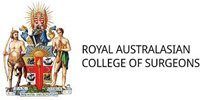Endoscopy
An endoscope is a long, thin, flexible tube with a tiny video camera and light attached on its end. Endoscopy is a procedure used to diagnose and treat problems of the digestive system. It is usually indicated for patients experiencing difficulty with swallowing, having persistent isolated nausea or vomiting, chronic anaemia and/or iron deficiency anaemia, acute gastrointestinal bleeding and gastro-oesophageal reflux.
Traditionally, physicians refer patients to a GI endoscopist to evaluate the necessity for endoscopy. Open access endoscopy is when a patient is referred to have a routine gastrointestinal endoscopic evaluation without consulting a specialist doctor first. To qualify, you need to have few or no medical problems. The common procedures that are performed are a colonoscopy, where the scope is introduced through the anus to view the colon or large intestine, and a gastroscopy, where the scope is introduced through the mouth to view the oesophagus, stomach and small intestine.
Although open access endoscopy is becoming more common, it may be associated with certain drawbacks such as poorly informed patients and inappropriate or unnecessary referrals. However, it can be used safely when patient safety, transfer of information and medical complexities are properly addressed.
















